Lower back
Generally considered to be the lumbar region, and the site of much of the world’s pain, possibly because of man’s unnatural adoption of the upright posture. In the early development of the body the spine has a single C-curve, later it develops concave curves at neck and lumbar regions (lordosis) and convex or persistence of the C-curve in the upper back (dorsal kyphosis).
The vertebral column has five lumbar vertebrae, the bodies and processes becoming thicker and heavier in the progression of L1 to L5. They are separated by intervertebral discs, the essential strength in binding the vertebrae together; the thickest of these discs binds L5 to the upper sacrum.
The spinal cord in the early fetus has the same length as the spinal canal, formed by the circular spaces in the vertebrae behind the body and in front of the posterior element of laminae; as the fetus grows, the rates of lengthening of cord and body do not match, so by full growth the cord ends at about the junction of thoracic and lumbar vertebrae, and the nerve roots, grouped together as the “horse’s tail” (cauda equina) continue on down to their points of emergence between their respective vertebrae.
The flexor muscles of the lumbar spine are located within the abdominal cavity, posterior to the peritoneum. The psoas muscle arises from the bodies and transverse processes of all five lumbar vertebrae and passes down the lower back to leave the abdomen beneath the inguinal ligament and insert into the femur. Both psoas muscles contracting together will flex the spine forward, one working alone will laterally flex the spine; if the spine is held still, the psoas flexes the hip, and is the muscle (with Iliacus) that will flex the hip in the seated position.
Quadratus lumborum is as its name implies, a rectangular muscle that runs between pelvic crest and 12th rib; as in psoas, one contacting will laterally flex the spine, both contracting will forward flex the spine.
At the back of the lumbar spine there is a complicated set of muscles, collectively known as erector spinae. They are enclosed in a dense fascial envelope. The muscles arise from the posterior aspects of the lumbar vertebrae, laminae, spinous and transverse processes, and insert at varying points in the spine above that, some reaching as far as the upper cervical vertebrae.
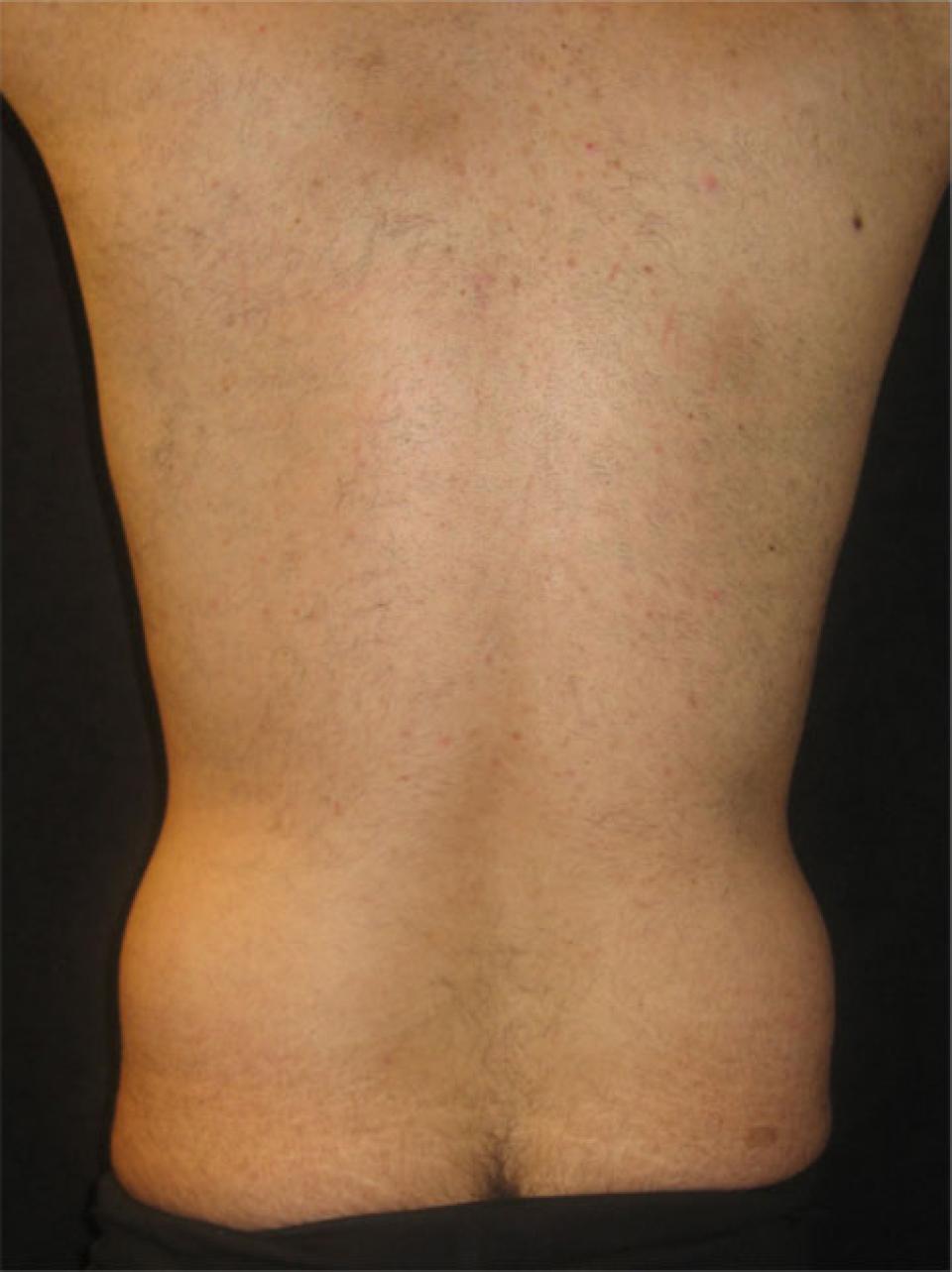 before
before
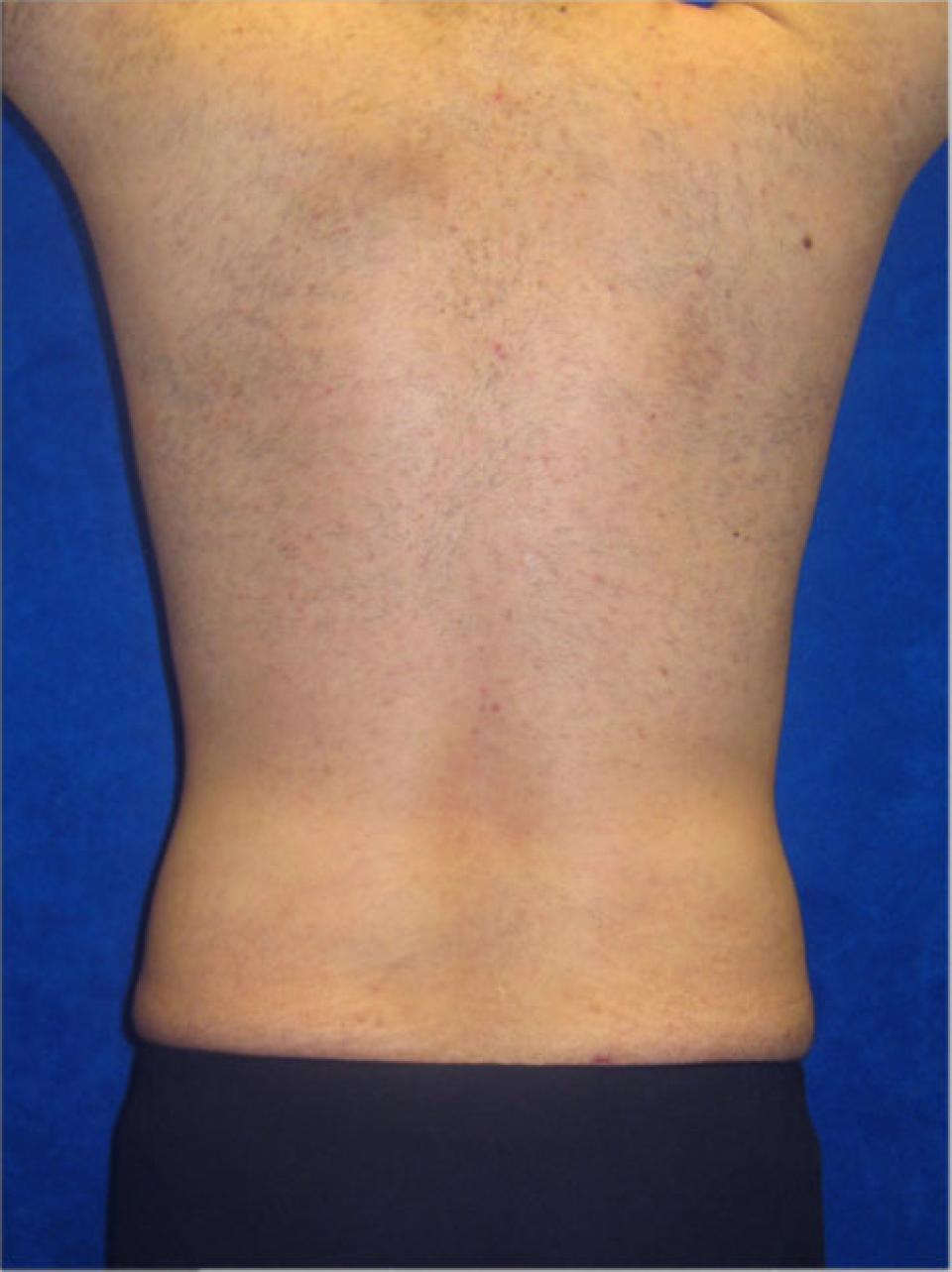 after
after
This case depicts a 34 year old man who was concerned with the appearance of excess fat above his buttocks.
In both men and women, this area is sometimes referred to as "the love handles," and it is especially responsive to liposuction. I tend to use ultrasound assisted liposuction in this area because it allows me to remove fat more evenly and more thoroughly. The incisions are easy to hide in most swimwear and the results can have a profound effect upon the male physique.
The post-operative photographs depict this man's appearance approximately six weeks after surgery.
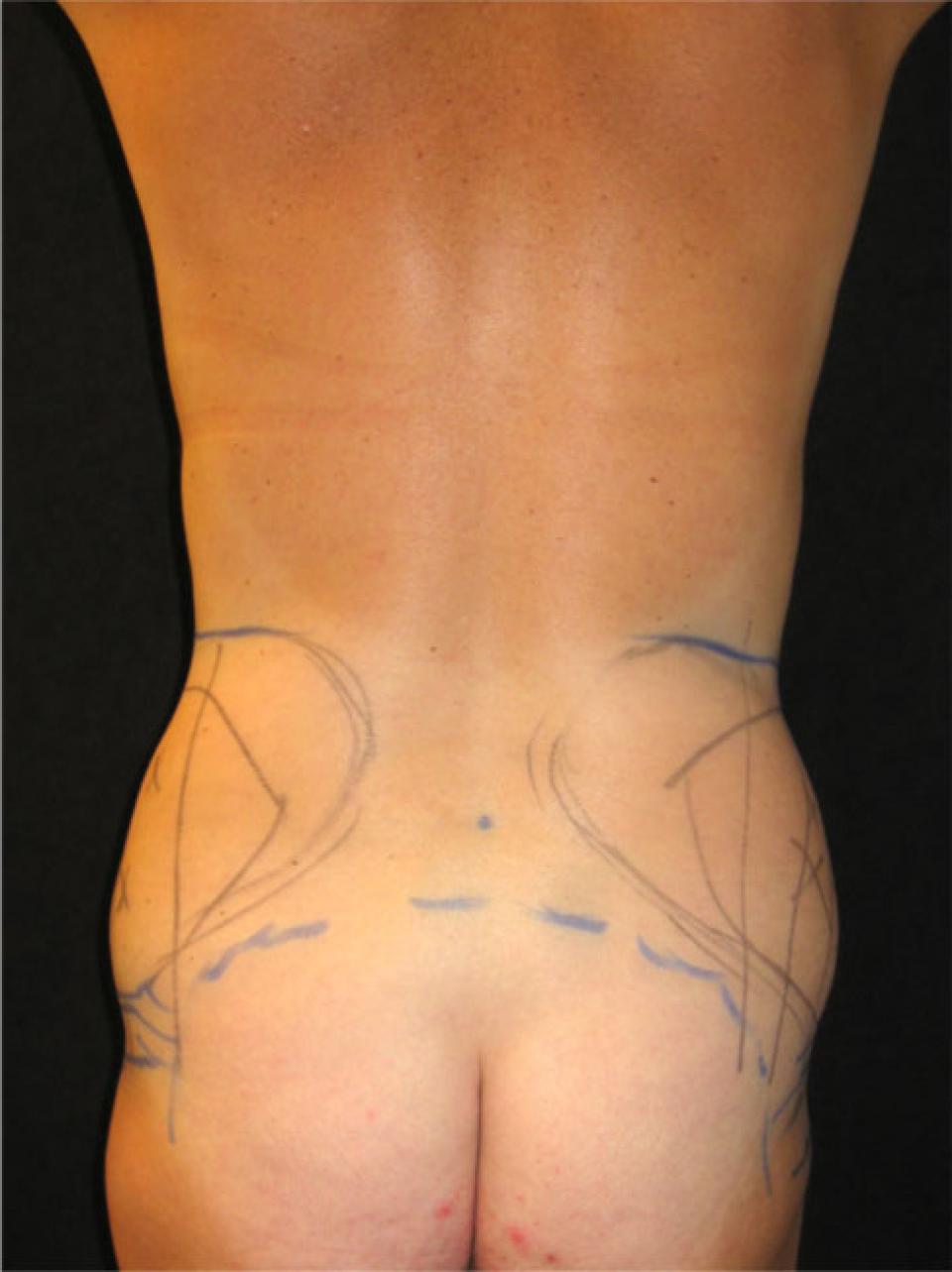 before
before
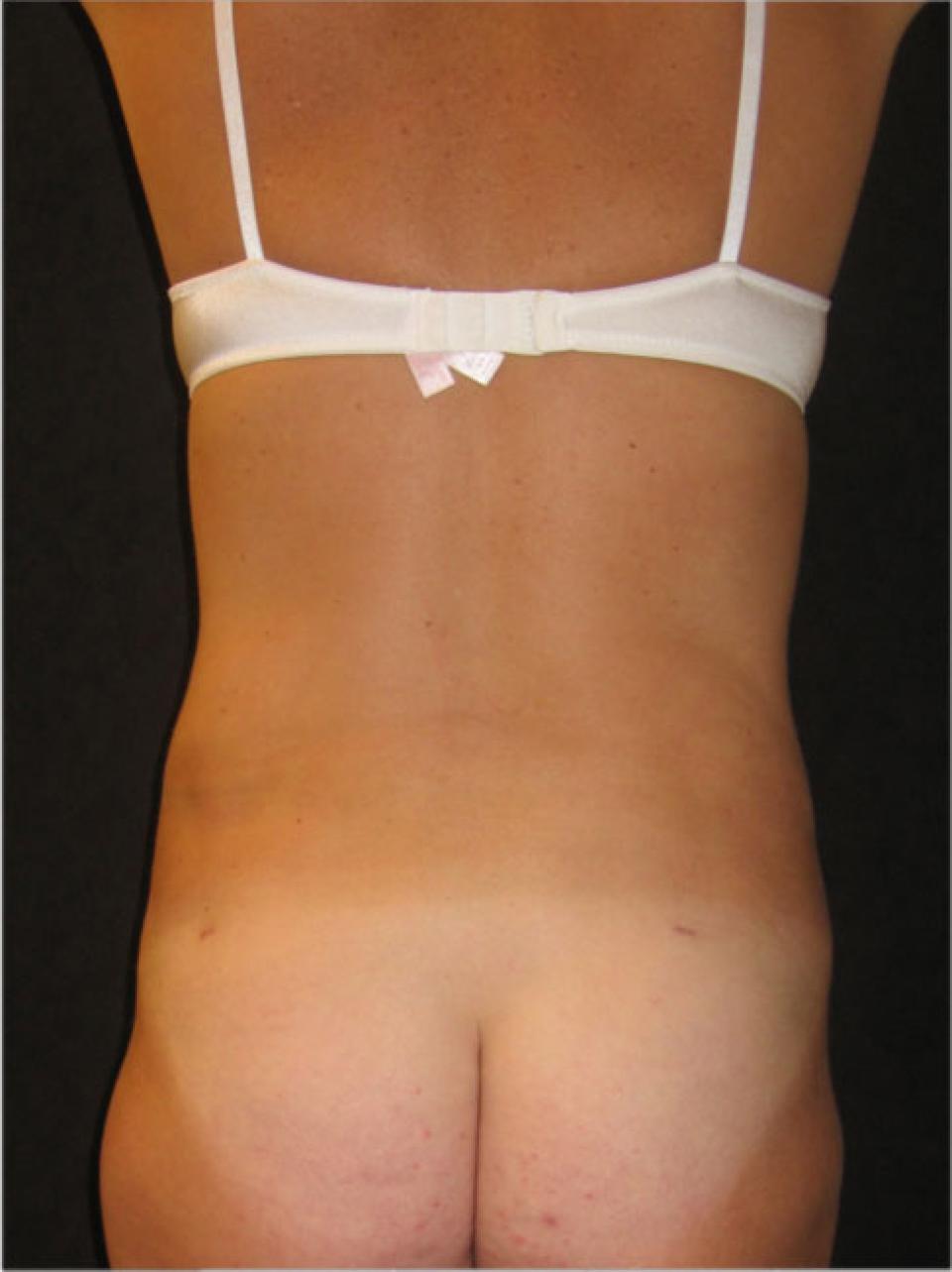 after
after
This case depicts a 45 year old woman who had concerns with excess fat above the buttocks.
This area was deeply out of proportion with the rest of her trunk and negatively affected the way that her clothing fit. In both men and women, this area is often referred to as the "love handles."
Ultrasound-assisted liposuction was utilized to harmonize the appearance of the lower back with that of the remainder of her torso. The post-operative photographs depict this woman's appearance approximately three months after surgery.
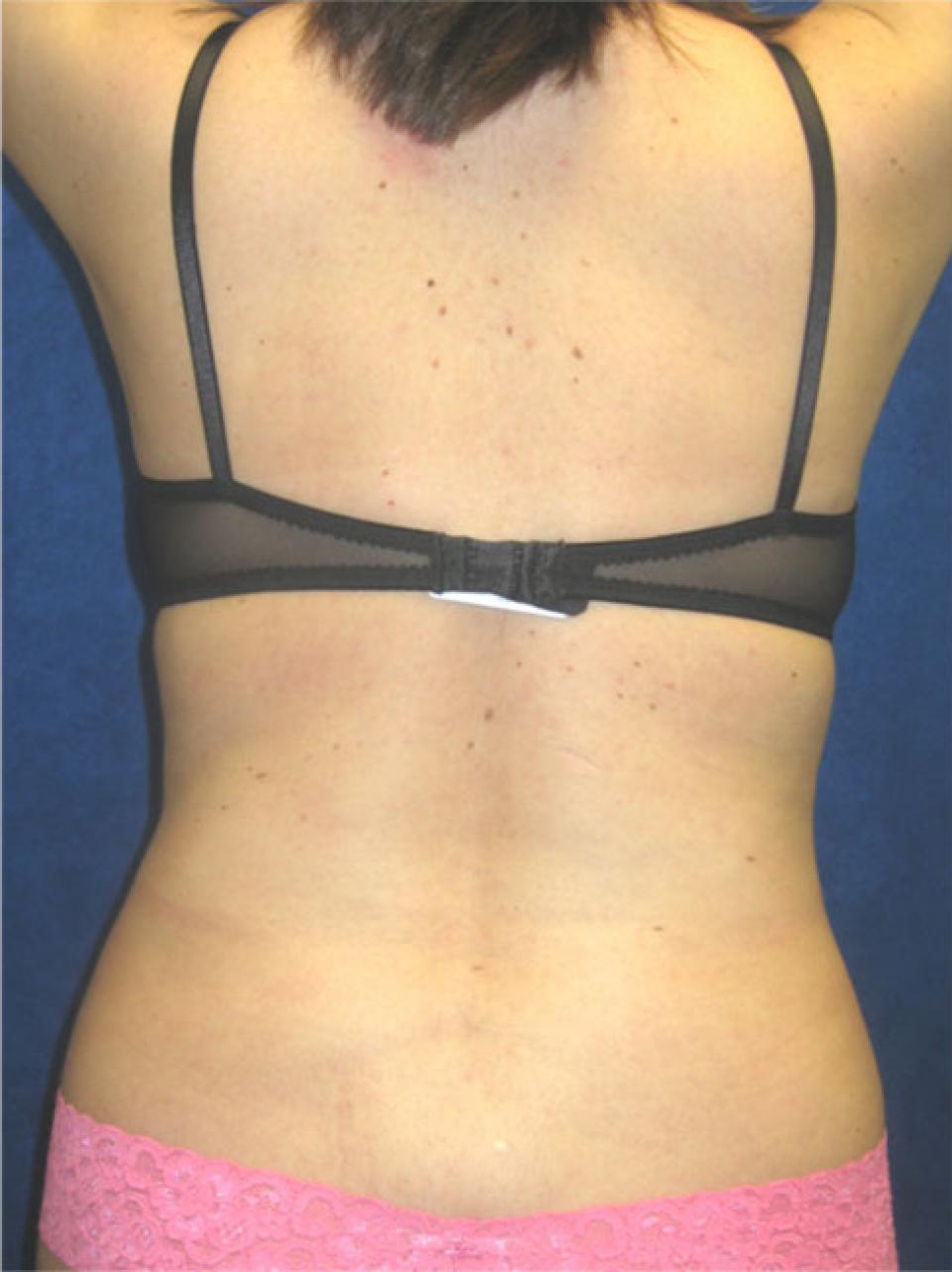 before
before
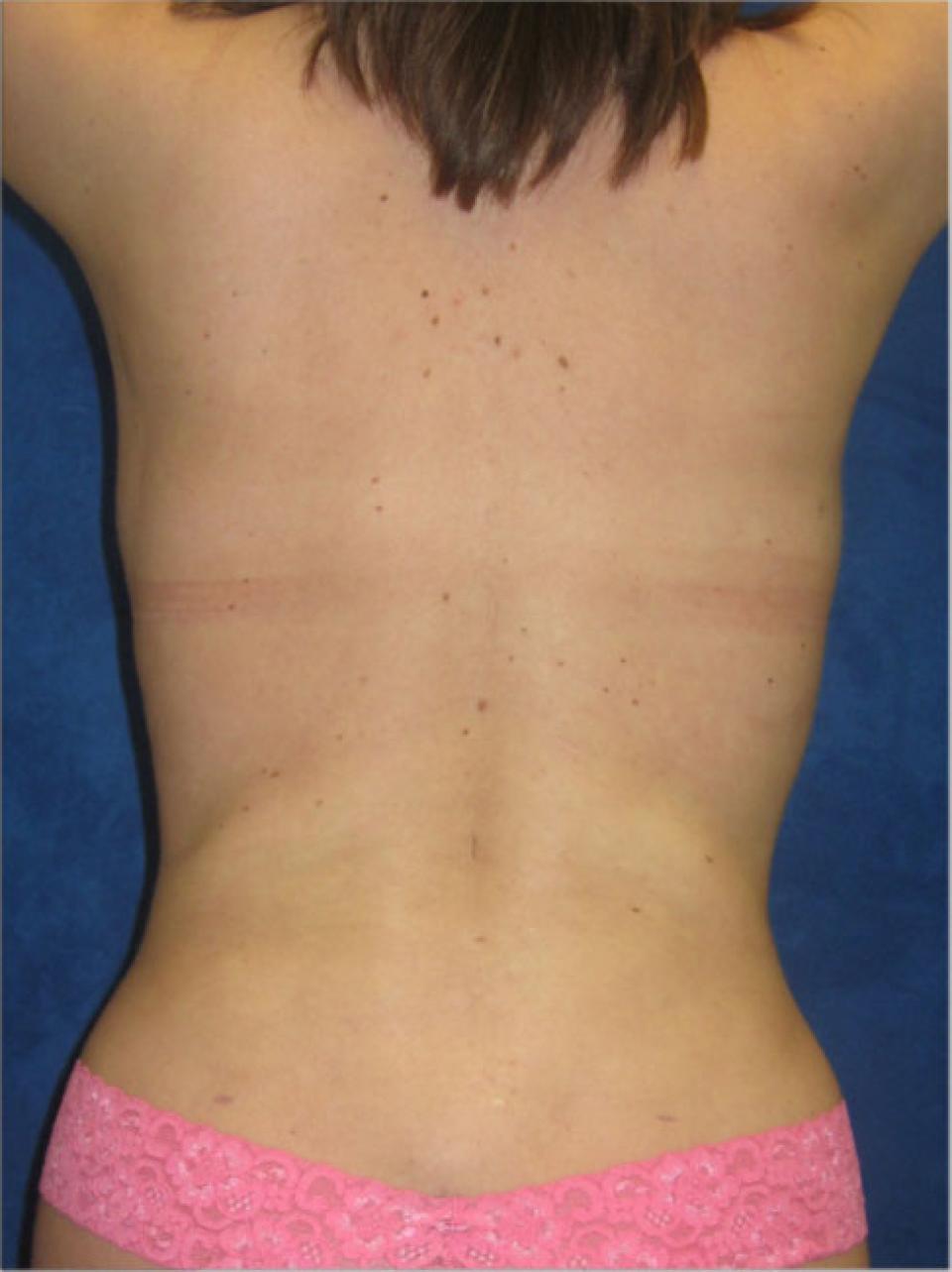 after
after
This case depicts a 33 year old woman who had concerns with excess fat above the buttocks, around the waist in the back and around the bra area. Liposuction in the back has been greatly facilitated in my practice with the advent of ultrasound assisted liposuction.
This specialized method of liposuction uses ultrasonic energy to break up fat cells so that they may be removed more thoroughly and more evenlly.
I use this method of liposuction in the back and in other areas of the body where removal of fat with traditional liposuction is more difficult. The post-operative photographs depict this woman's appearance approximately three months after surgery.
 before
before
 after
after
This 33 year old woman embarked upon a diet and exercise program that resulted in a 100 pounds weight loss over a 10 month period. Significant changes in her body's appearance occured, but because there is a limit to how much an individual's skin can shrink down to a smaller contour, some issues remained.
These types of issues are ideally adressed by performing an abdominoplasty along with tailored liposuction.